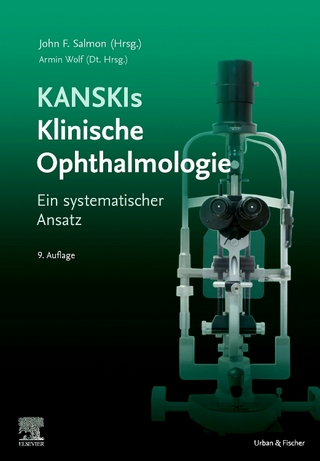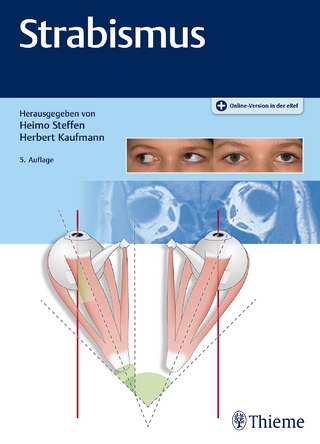
Introduction to Adaptive Optics for Vision Science
Productivity Press (Verlag)
978-1-4987-6152-9 (ISBN)
- Noch nicht erschienen (ca. Dezember 2024)
- Versandkostenfrei innerhalb Deutschlands
- Auch auf Rechnung
- Verfügbarkeit in der Filiale vor Ort prüfen
- Artikel merken
Karen Hampson is a researcher in the Bradford School of Optometry and Vision Science at Bradford University. Her primary area of research is the application of adaptive optics to vision science. She has worked in this field for 15 years and developed several adaptive optics systems from the ground up. Her interest in this area began with her PhD at Imperial College, which she completed in 2004. Her current projects include retinal imaging for detecting disease at the single cell level, and investigating how the aberrations of the eye influence focusing control in myopia. She is also secretary of the Institute of Physics Medical Physics Group and a committee member of the Optical Group.
Introduction. Origins of Adaptive Optics. Astronomy and Adaptive Optics. Adaptive Optics and the Eye. The Eye as an Adaptive Optics System. Imperfections in the Eye’s Adaptive Optics System. History of Adaptive Optics Applied to the Eye. Summary. Chapter 2: Designing and Building a System for Vision Science. Optical Design of a Basic System. The Importance of the Pupil. Relay Telescopes. Optical Components. Field of View and Light Loss. Removing Reflections. Light Sources. Choosing the wavelength. Choosing the type of light source. Safety Considerations. Mounting and Aligning a System. Mounting the Optics. Aligning the System. Stabilising the Subject. Summary. Chapter 3: Measuring the Eye’s Aberrations. Description of the Eye’s Aberrations. Rays to Wavefronts. Zernike Polynomials. Temporal Properties. Shack-Hartmann Sensor. How it Works. Determining Spot Locations. Choosing the Shack-Hartmann Components. Obtaining the Zernike Coefficients. Beyond Conventional Shack-Hartmanns. Other Types of Sensors. Curvature Sensor. Pyramid Sensor. Wavefront Sensorless Systems. Summary. Chapter 4: Correcting the Eye’s Aberrations. How Correctors Work. Phase Conjugation. Factors to Consider when Choosing a Corrector. Deformable Mirrors. Segmented. Continuous. Liquid Crystals. Other Types of Corrector. Correctorless Systems. Increasing System Correction Capabilities. Removing Defocus and Astigmatism. Stroke Amplification. Summary. Chapter 5: Controlling an Adaptive Optics System. Open-Loop versus Closed-Loop Systems. Obtaining the Corrector Signals. Via the Slopes. Via the Zernike Polynomials. Time Delays and their Consequence. Origin of Time Delays. Instability. The Integral Controller. Why it is Used. Doing a full Correction. Manipulating the Zernike Coefficients. Measuring System Performance. Writing the Software. Summary. Chapter 6: Retinal Imaging with Adaptive Optics. Anatomy of the Retina. Instruments and their Application. Flood Illumination Ophthalmoscope. Scanning Laser Ophthalmoscope. Optical Coherence Tomographer. Multiconjugate Systems. Multimodal Instruments. Summary. Chapter 7: Vision Manipulation with Adaptive Optics. Limits of Visual Acuity. Accommodation. Dual Channel Monocular System. Binocular System. Visual Simulation and Blur Adaptation. Summary. Chapter 8: The Future. Summary of what we can Currently Achieve. Limits and how they can be Overcome. Appendix. Laser Safety calculationsTroubleshooting.
| Erscheinungsdatum | 24.05.2016 |
|---|---|
| Reihe/Serie | Multidisciplinary and Applied Optics |
| Zusatzinfo | 35 Illustrations, color; 40 Illustrations, black and white |
| Verlagsort | Portland |
| Sprache | englisch |
| Maße | 156 x 234 mm |
| Themenwelt | Medizin / Pharmazie ► Medizinische Fachgebiete ► Augenheilkunde |
| Naturwissenschaften ► Physik / Astronomie ► Optik | |
| Technik | |
| ISBN-10 | 1-4987-6152-6 / 1498761526 |
| ISBN-13 | 978-1-4987-6152-9 / 9781498761529 |
| Zustand | Neuware |
| Haben Sie eine Frage zum Produkt? |
aus dem Bereich


